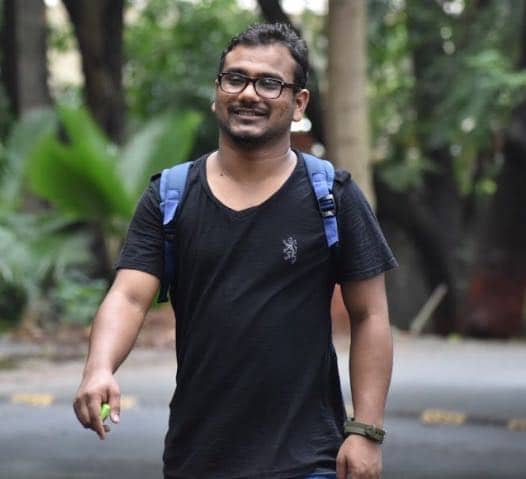Vishal Thakare

When India became independent in 1947, there were two important opinions about Idea of India by two contrasting but very powerful personalities namely Dr. Ambedkar and Gandhi. Gandhi was advocating the idea of ‘Gram Rajya’ (In other words Ram Rajya too) and was of the opinion that India should not be built on the ‘Cities’. Firmly believing that village should be the centre of development and that it is the only civilizational strength we have inherited from the past, Gandhi said we must not imitate western colonial empires that had witnessed a socio-structural transformation in their societies mostly in the cities and arrived at egalitarian structures. So he suggested finding some ‘Desi’ ground to build the Nation which was the village in his opinion. It should be noted that Gandhi also secured his law training from the western world. While Dr. Babasaheb Ambedkar on the other hand, after being trained in western society developed his strong belief that ‘Urban Space or City’ will blur if not eliminate the caste identity and allow everyone to realize the fullest expression of human personality and advised Dalits to move into cities in the hope of realizing their aspirations of civic life. He was very critical of the village and had the first-hand experience of ‘rejection’ as a result of belonging to untouchable caste as opposed to Gandhi.
In the light of these two important views that has been intensively contested in the last 75 years of independence and especially after the neoliberal transition led by economic and political elite in our country, it is important to reflect on these ideas and particularly in the context of dream projects like ‘Clean India’ which began four years back and more particularly ‘Smart Cities’ very recently. To contextualize the debate, the Rap titled ‘Meri Galli Ki Samasya’ by young Ambedkarite Rapper, Vipin Tatad, is taken as a reference point in this article.
Vipin is a resident of Amravati, a city selected under ‘Smart Cities’ project, located in Vidarbha region of Maharashtra. He is 22 year old, often identifies himself as VIP, was born and raised up in Dalit locality of Siddharth Nagar in middle size town like Amravati. Being born in Dalit family & locality to which he calls ‘Zhopadpatti’ (slum), probably because that’s how he got exposed to a conception of ‘House’ which does not necessarily resembles with ‘Civil Lines & Colonies in the City’. The imagination of ‘City’ for Vipin is agitative and strongly reflects in his ‘Rap’ when he asks the question ‘Meri Galii Ki Samasya’ and takes you through ‘Galliees’ (small narrow lanes found in the slums) characterised with material deprivation, infrastructural adversities, insanitation and the people surviving there and striving for meaningful existence. The ‘deformed’ faces captured by Vipin in his Rap are enraged by not being accepted in the society and deprived them ‘Substantive citizenship’ guaranteed in the Indian constitution. Vipin has insightfully captured this anguish (Samasya) of Dalits/Adivasis/Nomads in ‘Repulsive Enclaves’ that constitute an inseparable part of the imaginary project called ‘Smart Cities’ in the present regime.
This is manifested strongly when Vipin urges to take some time to see (Aake Jara Dekh Lo) the ‘The Samasya’ of his Galli, which is a common characteristics of every slum in the city and mentions the number of problems of the ‘excluded’ living on the margins of cities and if not on the margins then in ‘Ghettos’ in the Middle of City’. The people who are part these margins and ghettos feel connected to this Rap as it resembles their life while those who are part of the ‘colonies and civil lines’ would blame and complain it as an ugly picture of India or Cities and take it as a shame. But they should know how ugly come into existence and become a reality and the processes through which they became of a part of ‘Good’.
Beginning with material adversities like not enough food to eat, schools, lack of sanitation to the safety of women, powerlessness to get medical treatment and to the questions of scholarships, farmers issues, the Rap powerfully portrays the ‘repulsion’ and ‘outrage’ in these ‘repulsive enclaves’ in the city and debunks the myth of imaginary projects such as ‘Clean India’ and ‘Smart Cities’. It powerfully signifies the dissent of ‘Excluded’ to such projects and exemplifies the aspirations of the whole subaltern class along with their assertion and ‘insurgent citizenship’ on the roads.
The rap is distinct when it comes to moral and ethical aspirations of these people. The ‘repulsion’ among the excluded and ostracised living and surviving in these ‘Ghettos’ and ‘Margins’ does not necessarily disempower them but rather makes them more assertive and insurgent to claim their right to city through democratic institutions and practices. The Rap signifies the importance of ‘sites’ that are allowing these ‘Citizens in Making’ to express their resentment, unrest and dissent in a completely democratic manner. Their symbols like Blue Flags/ statues of Babasaheb Ambedkar that are the inherent part of these ‘Repulsive Enclaves’ is symbolically presented and powers them morally. Even in such grotesque inequalities and forced vulnerabilities, this vast population remains morally valiant and derive their moral stamina by celebrating the ‘The Ideals’ (equality, liberty, fraternity) in their ‘Idols’ like Phule/Shahu/Ambedkar/Periyar/Savitri & many other organic leaders. They celebrate them and reminds ‘us’ of egalitarian promises made in the constitution. This moral stamina is so strong that it cannot be easily broken despite of all the material adversities they not only live in and survive but survive ‘Meaningfully’ in the hope that their aspirations will be realized too. This Rap is a very strong dissent to dominant narratives of ‘Clean India’ and ‘Smart Cities’ that do not accommodate the aspirations of excluded and serve tiny section of the population that gets discomforted of these ‘repulsive enclaves’ and perceive it to be ugly and timely express the need of eviction to make the cities ‘Clean’.
Meri Gallie Ki Samasya is a true expression and reflection of anti-caste struggle and complains about an exclusionary process in which insurmountable anger and resentment of Dalits, Adivasis/ Nomads and Bahujans living in these materially deprived localities (Slums/Zhuggis) is being accumulated and can outburst any time. It raises the conscience and consciousness about their ‘Being’ in the city spaces and warns the policymakers, political and economic elites to change their way. The anguish, Aage Bhi to Badhte Ja Rahe Ho, Piche bhi jara dhyan do’ (pay some attention to those left behind) and ‘Aake Jara Dekhlo’ (come and see) in the RAP is a call to all those who believe in the egalitarian principles laid out in the constitution (notably when it is being burnt in present regime) to unite and express their anger, resentment, unrest, complains without any fear and fight for their rights. It symbolizes the new and strong ‘Cultural Movement (Moment) in Making’ that seek to reflect the ‘excluded aspirations’ and contest the ‘Dominant’ with the power of music, images and voice.
About Vipin Tatad:

Vipin is 22 year old, often identifies himself as VIP. He was born and raised up in Dalit locality of Siddharth Nagar in middle size town, Amravati which is located in Vidarbha region of Maharashtra. Being born in Dalit family & locality which he calls ‘Zhopadpatti’ (slum), probably because that’s how he got exposed to a conception of ‘House’ which does not necessarily resembles with ‘Civil Lines & Colonies in the City’. His father was running & still runs ‘Chay Shop’ (Tea Canteen) near to Hospital in Amravati and raised his family strongly believing in Ambedkar’s vision. After passing on the boundary- 35% in 12th exam and realizing his interests, Vipin turned towards making video production and began experimenting with it. He never went to any professional schools to study video production and trained (still training) himself into a ‘Rapper & Film Maker’ in his informal school. He is experimenting and connects with the aspirations of larger Subaltern population living in city and have larger plans to engage more meaningfully through his ventures in the coming future.
Please watch the song here on YouTube:
Song: Mere Gallie Ki Samasya
Rapper/Director/Editor: Vipin Tatad
~~~
Vishal Thakare has graduated from Berlin School of Economics and Tata Institute of Social Sciences and currently based in Mumbai. He has also been to United Nations as Human Rights Defender and currently does freelancing in academics.









